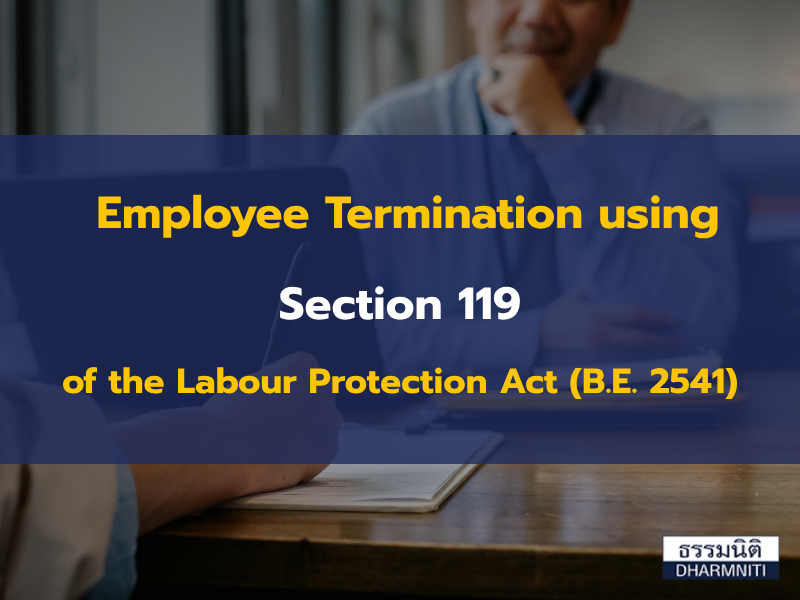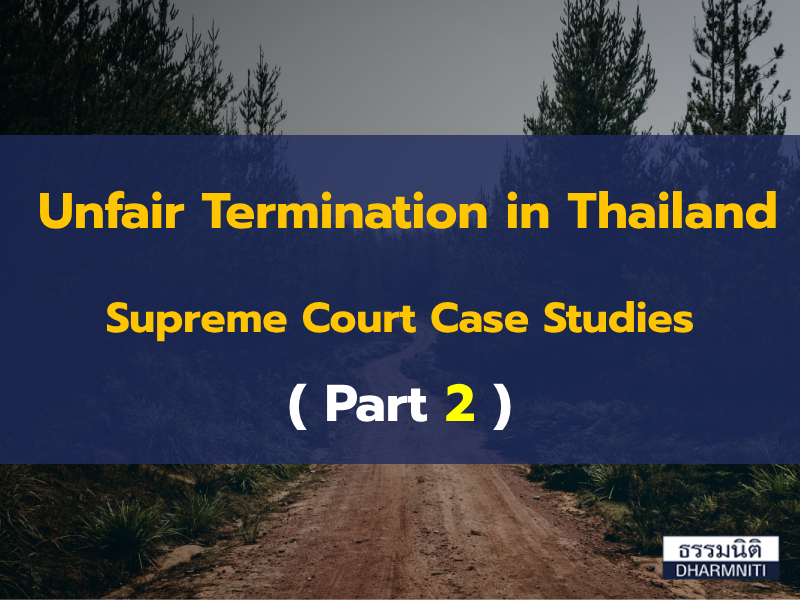i Introduction
In this month’s article we shall examine how employees in Thailand can formally resolve a dispute under the Labour Relations Act (1975). We shall begin by going through the various steps in the process and examining the general requirements and important legal aspects of each stage and what employees should be wary of.
Dispute Resolution Process:
Step 1 – Issuing the Demand
If a dispute has arisen between staff and their employer in relation to conditions of employment (such as a disagreement over wage increases or working hours etc), then as a first step the employees must submit their demands in writing to their employer. In relation to who such demands should be given to, ordinarily the demand letter should be given to the owner or the authorized director(s) of their employer (depending on whether the owner is a natural person or a juristic person). In the writers opinion, it would be advisable to send the demand letter by registered mail so that it can be proven that it was duly sent and received. If an employer is a company and the staff are not sure who the authorized director(s) are then they should obtain a copy of the affidavit of company registration from the Department of Business Development at the Ministry of Commerce to determine who these individuals are.
In relation to who should sign the demand letter, please note that the actual demand letter can be signed by the head representative of those employees who are involved in the dispute. If the employees that are behind the dispute have elected representatives for the negotiation, then no more than seven names of such representatives need to be specified in the written demand notice, however it is worth noting that in many cases there are less than seven representatives as having too many people can prove to be impractical and inconvenient. In the writer opinion, it is also advisable for the demand letter to specify who the leader of the employee’s representatives is. One should also note that the written demand letter must contain a list of the names and signatures of all of those employees involved in the demand, which must be at least 15% of the total number of employees employed in the business. Often this is included as an annexure or attachment to the demand letter, however if this approach is used then such list should be referenced in the actual demand letter.
In relation to how employees can elect representatives for the negotiations with the employer, please note that this is achieved by the employees calling a meeting of those employees involved in the demand to agree on who will be their representatives, the number of which must not exceed seven persons. We recommend that employees retain minutes of such meeting and a list of those who attended it in order to be able to prove that the employee representatives were duly elected by the employees.
Step 2 – Notice from Employer and Commencement of negotiations
After the employer receives the demand letter, it will need to give notice of his/her name or the names of their representatives to the employee’s representative(s). Thereafter the parties must begin the settlement negotiations within three days of receiving the demand letter.
Step 3 – If agreement can be reached at the negotiations
If the negotiations prove successful in resolving the dispute then the terms of such agreement must be made in writing and be signed by the employer (or its representatives) and the employees’ representatives. Thereafter, the employer must within three days of the agreement being reached openly display a notice of the conditions of employment (including those newly agreed) at the workplace, for a period of at least thirty days. The employer must also register the agreement relating to conditions of employment with the Director General of the Department of Labour within fifteen days of the date of the agreement.
After this agreement has been signed by both the parties it will be legally binding on both the employer as well as all employees who take part in the election of employee representatives. Moreover, the employer is not permitted to enter into a hire for service contract with employees that conflicts with with the agreement unless its terms and conditions are more favorable to the employees.
Step 4 – If agreement cannot be reached – Conciliation Officer
If the employer fails to attend the negotiation meeting within three days of it receiving the demand notice or if no agreement can be reached at such negotiation meeting (for whatever reason) then a ‘Labour Dispute’ shall be deemed to have occurred. Thereafter the employees’ representatives need to formally notify in writing, a Conciliation Officer at the Department of Labour, within the following timeframes:
- If the employer fails to come to the negotiations then within 24 hours of the 3 days expiring;
- If the negotiations fail to resolve the matter then 24 hours from when agreement cannot be reached between the parties.
If the Conciliation Officer is notified, then they will proceed to try to effect settlement between the parties within five days of them receiving the abovementioned notification from the employees’ representative(s), ordinarily this is done at one or more meetings.
If the officer can persuade the parties to agree then such agreement must be made in writing and signed by the employer (or its representatives) and the employees’ representatives. Thereafter, the employer must within three days of the agreement being reached openly display a notice of the conditions of employment (including those newly agreed), at the workplace for a period of at least thirty days. The Employer is also tasked with registering the agreement with the Director General of the Department of Labour within fifteen days of the date of the agreement. However, if the Conciliation Officer cannot persuade the parties to agree within the five day period then the dispute shall be regarded as a dispute that cannot be settled. In such case the parties may agree to appoint a labour dispute arbitrator or the employees may then go on strike or the employer can do a lock-out, both of these options shall be discussed in our next monthly installment.
Dharmniti Law Office Co., Ltd.
2/2 Bhakdi Building 2nd Floor, Witthayu Road, Lumphini, Pathumwan, Bangkok,
Tel : (66) 2680 9710, Email: ryan@dlo.co.th or info@dlo.co.th




 Except where otherwise indicated, content on this site is allowed to be used under
Except where otherwise indicated, content on this site is allowed to be used under